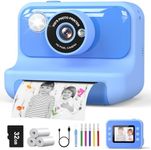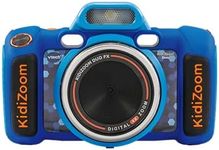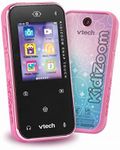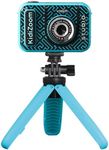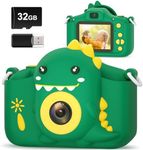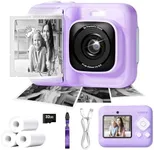Buying Guide for the Best Kids Digital Cameras
Choosing a digital camera for kids can be a fun and rewarding experience. The right camera can help foster creativity, teach responsibility, and capture precious moments from a child's perspective. When selecting a camera, it's important to consider factors such as durability, ease of use, and the features that will best suit your child's needs and interests. Here are some key specifications to consider when picking a kids' digital camera and how to navigate them to find the best fit for your child.DurabilityDurability refers to how well the camera can withstand drops, bumps, and rough handling. This is especially important for kids, who may not always be gentle with their gadgets. Look for cameras with rugged, shockproof designs and rubberized exteriors. Some cameras are even waterproof, which can be great for outdoor adventures. If your child is very young or tends to be rough with their toys, prioritize a highly durable model to ensure it lasts longer.
Ease of UseEase of use is about how simple and intuitive the camera is for a child to operate. This includes the layout of buttons, the simplicity of the menu system, and the overall user interface. Cameras with large, clearly labeled buttons and simple navigation are ideal for younger children. For older kids, a few more advanced features might be appropriate, but the camera should still be user-friendly. Consider your child's age and tech-savviness when choosing a camera with the right level of complexity.
Image QualityImage quality is determined by the camera's resolution, measured in megapixels (MP). Higher megapixels mean better image quality, but for kids, extremely high resolution isn't always necessary. Cameras with 5-10 MP are usually sufficient for young photographers, providing clear and vibrant photos without overwhelming them with too many technical details. If your child shows a keen interest in photography, you might opt for a camera with higher resolution to allow for more detailed images.
Battery LifeBattery life indicates how long the camera can be used before needing a recharge or new batteries. Longer battery life means more uninterrupted fun for your child. Cameras with rechargeable batteries are convenient and eco-friendly, while those using standard AA or AAA batteries can be handy for quick replacements. Consider how often and for how long your child will use the camera to determine the best battery option. For frequent use, a camera with a long-lasting rechargeable battery is ideal.
Storage CapacityStorage capacity refers to how many photos and videos the camera can hold. This is usually determined by the size of the internal memory and whether the camera supports external memory cards. Cameras with expandable storage via SD cards are great because they allow for more photos and videos without running out of space. If your child loves taking lots of pictures, look for a camera with ample internal storage or the ability to add external memory.
Special FeaturesSpecial features can include things like built-in games, photo effects, video recording, and even educational tools. These features can make the camera more engaging and fun for kids. For younger children, cameras with simple photo effects and games can be very entertaining. Older kids might appreciate more advanced features like video recording and editing tools. Think about what will keep your child interested and excited about using their camera when considering these extras.
Size and WeightSize and weight are important for ensuring the camera is comfortable for your child to hold and carry. A lightweight, compact camera is easier for small hands to manage and less likely to be dropped. Make sure the camera is appropriately sized for your child's age and physical abilities. If the camera is too heavy or bulky, it might be difficult for them to use effectively. Test out different sizes to find one that feels right for your child.
